Premium General-Purpose PVC Conveyor Belt Material
Conveyor belts are indispensable in modern industrial operations, serving as the backbone for material handling across various sectors including manufacturing, mining, packaging, and logistics. Their role is crucial in ensuring efficient, continuous movement of goods within facilities, optimizing production lines and reducing labor costs. PVC, a popular thermoplastic polymer, is ideal for general-use conveyor belts. Using premium PVC conveyor belt material can improve production efficiency. This blog post specifically delves into PVC conveyor belt material, a popular choice due to its durability, cost-effectiveness, and versatility. We will explore the specifications, uses, and benefits of PVC conveyor belts, helping businesses understand why this material might be the best choice for their conveyor system needs.
What is PVC Conveyor Belt Material
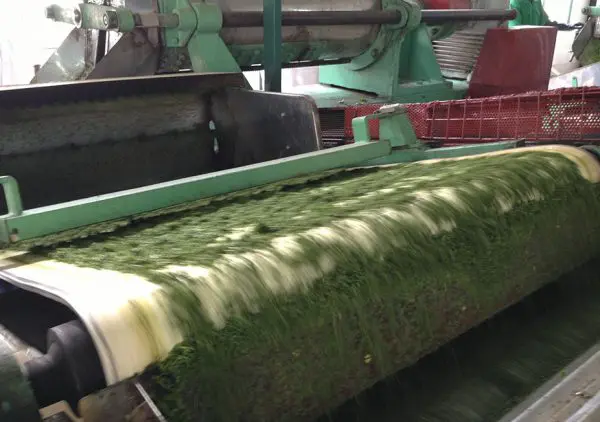
PVC, or Polyvinyl Chloride, is a versatile synthetic plastic polymer that is widely used in the production of conveyor belts. It is one of the most popular choices for various industrial applications due to its robust and cost-effective nature. PVC conveyor belt material is created by polymerizing vinyl chloride monomers, which results in a flexible and durable material perfect for handling a multitude of tasks in manufacturing and distribution environments.
Common Uses of PVC in Conveyor Belt Production
PVC is extensively utilized in conveyor belt manufacturing for several reasons:
- Durability: PVC conveyor belts are known for their long lifespan and resistance to wear and tear, making them suitable for heavy-duty use.
- Chemical Resistance: These belts offer excellent resistance to chemicals, oils, and other corrosive substances.
- Cost-Effectiveness: Compared to other materials like rubber or metal, PVC belts are more affordable, making them a cost-effective solution for many industries.
- Customization: The flexibility of PVC allows for various customizations in terms of thickness, color, and surface texture, adapting to specific industry needs.
- Low Maintenance: PVC belts are easy to maintain and do not require frequent replacements, reducing downtime and maintenance costs.
- Fire Resistance: PVC conveyor belts can be treated with fire retardants, making them less susceptible to catching fire.
Characteristics of PVC as a Durable and Cost-Effective Material
The following characteristics highlight why PVC is a preferred material for conveyor belts:
- Flexibility: PVC remains flexible under a wide range of temperatures and conditions, making it suitable for various environments.
- Lightweight: Its lightweight nature makes it easier to install and operate PVC conveyor belts, which can lead to reduced energy consumption.
- Weather Resistance: PVC can withstand various weather conditions, including extreme temperatures and moist environments, without deteriorating.
- Hygienic: The material can be manufactured to be non-toxic and is easy to clean, making it ideal for food processing industries.
- Abrasion Resistance: PVC is resistant to abrasions, which is crucial for conveyor belts that experience high levels of friction.
- Energy Efficiency: The smooth surface of PVC conveyor belts reduces the amount of energy needed for operations.
- Noise Reduction: PVC belts can operate quietly compared to other materials, which is beneficial in environments where noise is a concern.
- High Tensile Strength: Despite its flexibility, PVC has high tensile strength, which prevents the belt from stretching excessively under load.
- Recyclability: At the end of their lifecycle, PVC conveyor belts can be recycled, promoting environmental sustainability.
Given these characteristics, PVC conveyor belt material stands out as a practical and economical choice for industries looking for reliable and efficient material handling solutions. The versatility and range of benefits offered by PVC make it an indispensable component in the toolkit of modern industrial applications.
Specifications of PVC Conveyor Belt Material
When selecting a PVC conveyor belt material for industrial use, understanding its specifications is crucial to ensure optimal performance and durability. These specifications include factors such as thickness, tensile strength, and durability, each tailored to meet the demands of different industrial environments and applications.
Typical Specifications for PVC Conveyor Belts
PVC conveyor belts are designed to meet diverse industrial requirements with varying specifications:
- Thickness: The thickness of PVC conveyor belts can range from 0.8 mm to 6 mm. The choice of thickness depends on the application and the load the belt is required to carry. Thicker belts are typically used in industries where heavy loads or high impact forces are common, such as mining or heavy manufacturing.
- Tensile Strength: The tensile strength of PVC conveyor belt material indicates its resistance to being pulled apart and is critical for maintaining the belt’s integrity under operational stress. This strength is usually measured in Newtons per millimeter (N/mm) and can vary significantly depending on the belt’s composition and design.
- Durability: Durability in PVC conveyor belts encompasses resistance to abrasion, chemicals, and tearing. The composition of PVC allows it to withstand corrosive substances, abrasive materials, and extensive wear, making it a long-lasting option for conveyor systems.
Significance of 2-Ply PVC Conveyor Belts
The 2-ply PVC conveyor belt is a specific type of conveyor belt that features two layers of PVC material. This design is particularly significant for several reasons:
- Enhanced Strength and Stability: The two layers of material provide added strength and stability, making 2-ply belts more resistant to punctures, tears, and elongation under load. This is crucial for applications involving sharp or heavy objects that could damage a single-layer belt.
- Versatility in Applications: Due to their robust nature, 2-ply PVC conveyor belts are suitable for a wide range of applications. They are commonly used in industries such as food processing, where belts need to be strong, hygienic, and resistant to various stresses, as well as in packaging and distribution centers where durability and reliability are key.
- Improved Lifespan: The additional layer in 2-ply belts generally extends the lifespan of the belt compared to single-ply alternatives, offering better long-term value and reduced maintenance and replacement costs.
The specifications of PVC conveyor belt material play a crucial role in determining its suitability for specific industrial tasks. Understanding these specifications, particularly when considering specialized options like the 2-ply PVC conveyor belt, enables industries to optimize their operations for efficiency, safety, and cost-effectiveness. The selection of a PVC conveyor belt should always consider these factors to ensure the belt performs adequately under the specific conditions of the intended application.
Comparison with Other Materials Using PVC Conveyor Belt Material
PVC conveyor belt material is a prominent choice in various industries due to its unique properties. However, it is essential to compare it with other common materials like PU (Polyurethane) and rubber to understand its advantages and limitations fully.
PVC vs. PU Conveyor Belts
Both PVC and PU are popular choices for conveyor belts, but they serve different needs based on their material characteristics:
- Flexibility: PVC conveyor belts are generally more flexible than PU belts. This flexibility makes PVC suitable for industries where the belts may need to navigate through tight spaces or around sharp corners without cracking or losing integrity. On the other hand, PU belts, while also flexible, are better suited for applications where minimal stretch under load is crucial.
- Abrasion Resistance: PU belts typically offer superior abrasion resistance compared to PVC. This makes PU a better option in applications involving sharp or highly abrasive materials that might wear down a PVC belt more quickly.
- Application Suitability: PVC conveyor belt material is highly versatile and can be used in industries ranging from food processing to heavy manufacturing due to its chemical resistance and ability to be modified for fire retardancy. PU belts, with their excellent resistance to oils, fats, and chemicals, are particularly well-suited for the food industry where non-toxicity and ease of cleaning are essential.
Comparison with Rubber Conveyor Belts
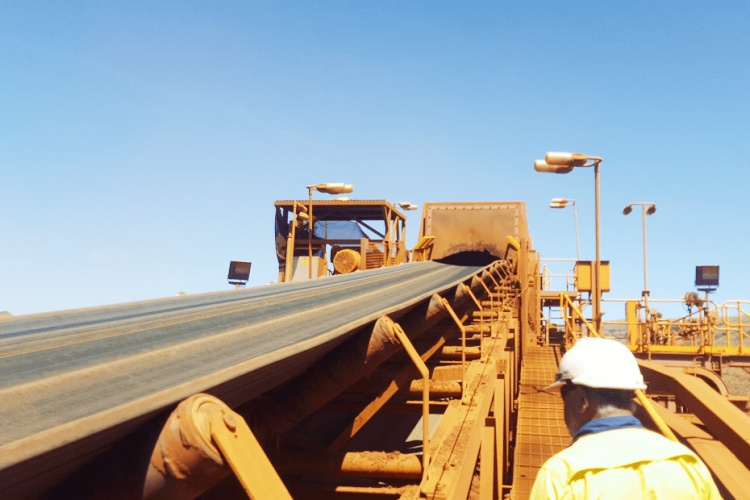
Rubber conveyor belts are another alternative often considered for different applications:
- Durability: Rubber belts are generally more durable and robust than PVC belts. They are designed to handle very high loads and abrasive materials, making them ideal for mining and quarrying applications.
- Temperature Resistance: Rubber belts can typically withstand higher temperatures than PVC belts. This property is crucial in applications involving heat or exposure to the sun for extended periods.
- Flexibility and Water Resistance: While PVC belts are quite flexible, rubber belts offer superior water resistance, making them suitable for outdoor environments and processes involving water or other liquids.
Each material—PVC, PU, and rubber—brings distinct advantages to the table, and the choice between them should be guided by specific application requirements such as load size, environmental conditions, and exposure to chemicals or abrasive materials. PVC conveyor belt material, with its cost-effectiveness and adaptability, remains a solid choice for a wide range of applications, offering a good balance between performance and cost.

Manufacturers and Suppliers of PVC Conveyor Belt Material
The manufacturing and supply of PVC conveyor belt material is a significant industry, supported by both global giants and local market players. Here, we’ll introduce nine major manufacturers and suppliers of PVC conveyor belt material and discuss their presence in the global and local markets.
Major Manufacturers and Suppliers
Gram Conveyor
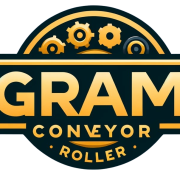
As one of China’s premier conveyor producers and distributors, Gram is recognized for its superior qualityEliminate the strain of manual lifting, carrying, and storage with our industrial conveyor systems, which not only help in preventing workplace injuries but also significantly increase productivity.
Habasit
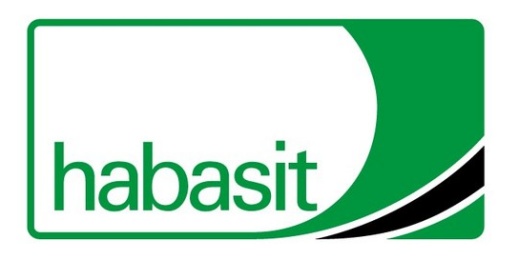
Habasit is renowned for its high-quality conveyor belts and transmission belts. The company offers a range of PVC conveyor belts that are used in various industries including food, textile, and automotive.
Ammeraal Beltech
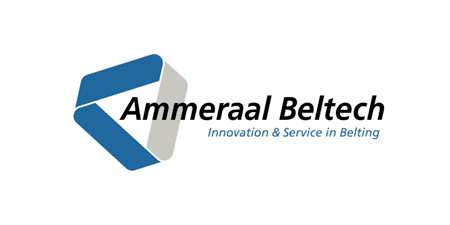
Operating globally, Ammeraal Beltech offers innovative and sustainable belting solutions, including PVC conveyor belts for general handling, and specialized applications such as the food industry.
Forbo Siegling
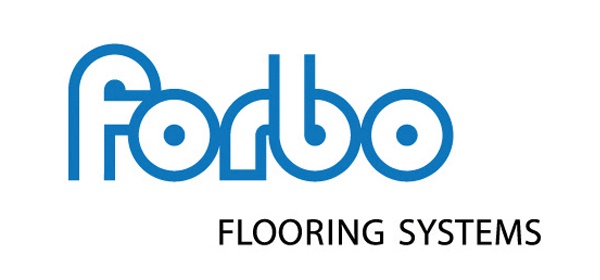
Forbo Siegling is a global leader in high-quality conveyor and processing belts, including PVC types. Their belts are known for their durability and efficiency in various sectors.
Intralox
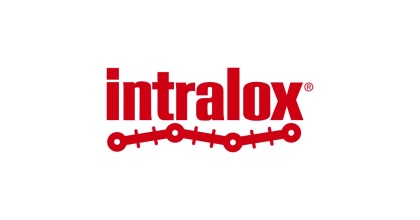
Intralox provides comprehensive conveyance solutions, including modular plastic conveyor belts and PVC coated belts, tailored for numerous industrial and food processing applications.
Derco
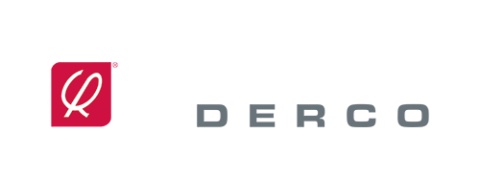
Derco’s PVC conveyor belts are used worldwide in industries like food processing, logistics, and more, known for their reliability and cost-effectiveness.
Esbelt

With a presence in over 70 countries, Esbelt offers a wide range of PVC belts known for their resistance to abrasion and chemicals, making them suitable for both light and heavy-duty applications.
Volta Belting
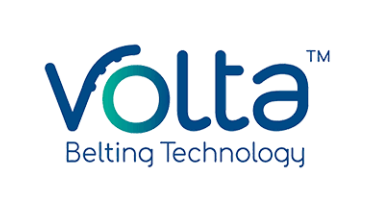
Specializing in thermoplastic elastomer belting, Volta also offers PVC solutions that are durable and designed to meet the demands of various processing environments.
Nitta Corporation
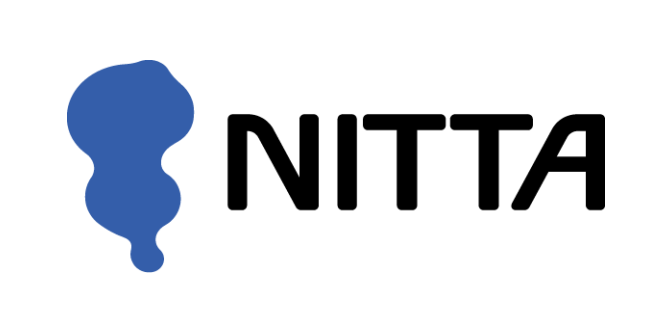
Nitta is a leader in the development and manufacture of various industrial belting, including high-quality PVC conveyor belts used in multiple industries from food handling to electronics.
Global and Local Market Players
The PVC conveyor belt material market includes a mix of global players with extensive distribution networks and local suppliers who cater to specific regional needs. Global companies like Habasit and Ammeraal Beltech have a broad reach, providing solutions across continents and adapting to various industrial requirements. They invest significantly in research and development to innovate and improve the quality and efficiency of their belts.
Local suppliers, on the other hand, tend to focus on specific market niches or regions. They offer customized solutions and personal customer service, which are highly valued in local markets. These suppliers often form an integral part of the supply chain by offering quick delivery times, specialized local knowledge, and support, which are crucial for many small to medium-sized enterprises.
The industry of PVC conveyor belt material is diverse, featuring both robust global suppliers and agile local manufacturers, each playing a vital role in catering to the comprehensive needs of various industries. Whether through expansive product lines offered by global manufacturers or the specialized services provided by local suppliers, businesses have a wide array of options to choose from to meet their specific conveyor belt needs.
Price Factors and Buying Tips for PVC Conveyor Belt Material
When considering the acquisition of PVC conveyor belt material, several factors can significantly influence the price. Understanding these factors can help potential buyers make informed purchasing decisions. Additionally, following specific buying tips can ensure the selection of a conveyor belt that meets operational requirements effectively.
Factors Influencing the Price of PVC Conveyor Belts
- Material Quality: High-quality PVC materials tend to be more expensive due to their enhanced properties like durability and resistance to wear and chemicals.
- Belt Thickness and Width: Thicker and wider belts require more material and are consequently more expensive. The size directly impacts the price, as larger belts are designed to handle heavier loads.
- Length of the Belt: Conveyor belts are priced by length; longer belts will naturally cost more as they require more material.
- Additional Features: Features such as cleats, sidewalls, and coatings for specific applications can add to the cost. These features improve performance in particular environments but come at a premium.
- Customization: Any customization required to meet specific industry standards or operational needs can increase costs.
- Brand: Belts from well-known and established manufacturers can be more costly due to their guaranteed quality and durability.
- Market Demand: Fluctuations in market demand can influence the price, with higher demand leading to higher prices.
- Economic Factors: Changes in raw material costs, labor, and transportation impact the final price of PVC conveyor belts.
Tips for Buying PVC Conveyor Belt Material
- Assess Your Needs: Understand the specific requirements of your operation, including load, speed, and environmental conditions.
- Check Belt Specifications: Ensure the belt’s specifications match your needs. Consider factors like tensile strength, flexibility, and resistance properties.
- Quality Over Price: Opt for the best quality you can afford. High-quality belts might be more expensive initially but often have lower maintenance costs and longer lifespans.
- Request Samples: If possible, get samples to test the belts under your specific operational conditions.
- Compare Suppliers: Look at several suppliers to compare prices and product offerings.
- Read Reviews: Check customer reviews and testimonials about both the product and the supplier.
- Warranty and Support: Choose products with favorable warranty terms and good customer support.
- Consider Lead Times: Factor in delivery times, especially if the belt is a critical part of your operations.
- Look for Customization Options: If standard belts do not meet your needs, inquire about customization options.
- Buy in Bulk: If you require a significant quantity, consider buying in bulk to potentially reduce costs.
- Check for Compliance: Ensure that the belt complies with all relevant industry standards and regulations.
- Evaluate Lifecycle Costs: Consider not only the initial purchase price but also long-term costs related to maintenance and replacement.
By carefully considering these price factors and following these buying tips, potential buyers can make well-informed decisions that optimize both operational efficiency and cost-effectiveness when selecting PVC conveyor belt material.
Applications of PVC Conveyor Belt Material
PVC conveyor belt material is widely used across various industries due to its versatility, durability, and cost-effectiveness. This section outlines seven common applications of PVC conveyor belts in different sectors and highlights specialized uses, such as for inclined transports.
Common Applications of PVC Conveyor Belts
- Packaging Industry: PVC conveyor belts are extensively used in the packaging industry for assembly lines where products are packed and sealed. Their smooth surfaces ensure that packages move efficiently without damage.
- Warehousing and Distribution: Warehouses use PVC conveyor belts for sorting, transporting, and handling goods. Their durability makes them suitable for moving heavy boxes and packages across large facilities.
- Food Processing: In the food industry, PVC belts are preferred due to their resistance to oils, fats, and other chemicals, and because they can be easily cleaned and sanitized. These belts transport everything from raw ingredients to finished products.
- Pharmaceuticals: The pharmaceutical industry relies on PVC conveyor belts for the clean and safe transport of medicines and components, particularly because these belts can be designed to be anti-static and non-toxic.
- Light Manufacturing: Light manufacturing facilities use PVC belts to transport components along assembly lines where precision and care are needed to avoid damage to delicate parts.
- Airport Baggage Handling: PVC conveyor belts are used in airports to move luggage efficiently from check-in to aircraft loading and unloading areas. Their robust nature ensures they can handle heavy loads and continuous use.
- Printing and Paper Industry: These industries utilize PVC conveyor belts for the smooth transport of paper products through printing presses and cutting machines, where high accuracy and minimal slippage are crucial.
Secure your conveyor belts with our expert help now.
Specialized Uses of PVC Conveyor Belts
- Cleated PVC Conveyor Belts: Cleated conveyor belts are a specialized type of PVC conveyor belt material that features raised sections, or cleats, which are crucial for preventing slippage in inclined or vertical transport systems. These belts are ideal for industries where materials need to be moved from one level to another, such as in mining operations, recycling plants, or to handle bulk products in agricultural facilities.
- Antistatic Belts: In environments where static electricity could pose a hazard or affect sensitive machinery, antistatic PVC belts are used to safely conduct static away from the transport area.
- Food Grade Belts: For direct contact with food, PVC belts can be made to comply with food safety standards, ensuring they do not contaminate the food products and are resistant to microbial growth.
The diverse applications of PVC conveyor belt material demonstrate its adaptability and effectiveness in various operational environments. Whether through general use in warehouses and manufacturing or through specialized applications like inclined and food-grade transports, PVC belts provide a reliable and efficient solution for many industrial needs.
Maintenance and Care of PVC Conveyor Belt Material
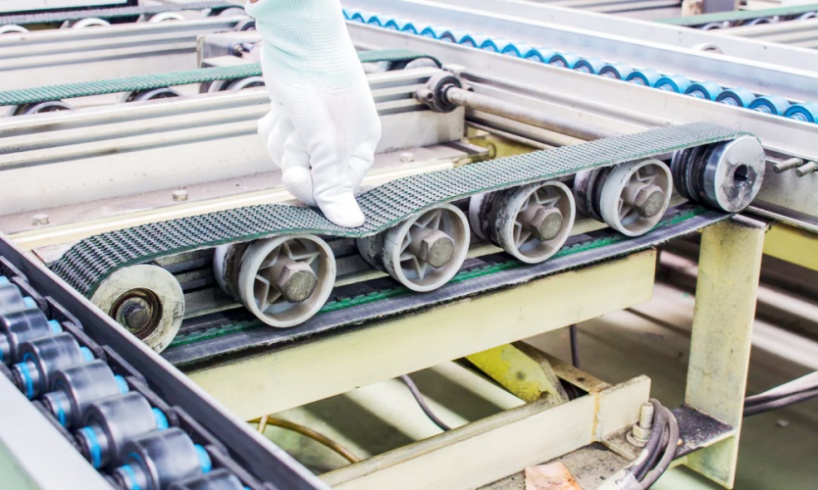
Maintaining PVC conveyor belt material properly is crucial for ensuring its longevity and optimal performance in various industrial applications. Below are eight essential guidelines for maintaining PVC conveyor belts, followed by an overview of common maintenance issues and their preventive measures.
Guidelines for Maintaining PVC Conveyor Belts
- Regular Cleaning: Keep the conveyor belt clean by removing debris, dust, and residues that accumulate during operation. Use recommended cleaners that are compatible with PVC material to avoid damaging the belt.
- Routine Inspections: Regularly inspect the conveyor belt for signs of wear, tear, or damage. Check for cracks, fraying edges, and any other visible defects that might affect performance.
- Proper Alignment: Ensure the conveyor belt is properly aligned. Misalignment can lead to uneven wear and tear, and potentially cause the belt to run off-track, which could result in further damage.
- Tension Adjustment: Maintain the correct tension on the conveyor belt. Over-tensioning can cause excessive wear and potential failure, while under-tensioning can lead to slippage and misalignment.
- Monitor Load Capacities: Do not exceed the recommended load capacity of the conveyor belt. Overloading can stress the belt, leading to premature wear and possible breakdown.
- Lubricate Components: Regularly lubricate all moving parts associated with the conveyor system, such as rollers and bearings, to reduce friction and wear.
- Temperature and Environment Control: Avoid exposing PVC conveyor belts to extreme temperatures and harsh chemical environments that could degrade the material.
- Scheduled Downtime for Maintenance: Plan for regular downtime to perform comprehensive maintenance checks and repairs without disrupting production schedules.
Common Maintenance Issues and Preventive Measures
- Belt Slippage: Often caused by overloading or inadequate tension. Prevent by ensuring proper tension and not exceeding load capacities.
- Edge Wear: Typically results from belt misalignment. Prevent by regularly checking and correcting the alignment of the conveyor belt.
- Accumulation of Residues: Can lead to decreased belt performance and increased wear. Implement regular cleaning schedules and use appropriate cleaning agents.
- Cracking and Brittleness: Usually due to exposure to very high or low temperatures or chemical attacks. Use temperature controls and avoid using the belt to transport chemical materials that could harm PVC.
- Belt Stretching: Can occur when the belt is consistently overloaded or incorrectly tensioned. Monitor and adjust tension regularly, and ensure loads are within recommended limits.
- Mechanical Failures (Rollers and Bearings): Caused by lack of lubrication or accumulated debris. Maintain a routine lubrication schedule and keep the conveyor system clean.
By adhering to these maintenance guidelines and addressing common issues proactively, the lifespan of PVC conveyor belt material can be significantly extended, ensuring that the conveyor system remains efficient and reliable in any industrial setting.
FAQs about PVC Conveyor Belt Material
Conveyor belts can be made from a variety of materials, each chosen based on the requirements of strength, durability, flexibility, and suitability for specific environments. The most common materials include:
Rubber: Often reinforced with metal or other fibers, rubber conveyor belts are widely used due to their durability and flexibility.
PVC (Polyvinyl Chloride): PVC belts are popular in light to medium-duty applications. They are durable, easy to maintain, and suitable for various industries including food processing and pharmaceuticals.
PU (Polyurethane): Known for its hygienic qualities, PU is preferred in food processing industries. It offers excellent resistance to oils, fats, and chemicals.
Metal: Used in heavy-duty applications, metal belts are extremely durable and resistant to heat, making them ideal for baking or foundries.
Fabric: These belts are usually made from layers of fabric like polyester or nylon and are used for a variety of general applications.
Creating a conveyor belt involves several materials, each contributing to the belt’s overall performance and durability:
Base Material: Typically rubber, PVC, or PU, serving as the core structure that provides shape and durability.
Reinforcement: Often made from fabrics like polyester or nylon, or from steel cords, to provide necessary tensile strength.
Cover Material: Depending on the application, the belt may require a specific type of cover to resist wear, abrasion, or chemical interaction. This could be a coated layer of PVC, PU, or specialized rubber.
Adhesives and Sealants: Used to bind the layers together securely.
Additional Elements: Depending on the belt’s use, manufacturers might add elements like cleats or sidewalls, which are generally made from the same material as the belt or from compatible materials.
The choice between PU and PVC conveyor belts depends on the specific needs of the application:
PU Belts are generally better for applications that require higher flexibility, abrasion resistance, and contact with foods. They are ideal for tight conveyor turns and delicate products.
PVC Belts are more suitable for general applications where high flexibility is less crucial. They excel in environments that do not involve direct contact with foods and where cost-effectiveness is a priority. Ultimately, PU belts are more durable and resistant, making them preferable in demanding environments, whereas PVC belts offer a more economical solution for many standard applications.
The “PVC 120” designation in conveyor belts refers to the belt’s tensile strength of 120 P.I.W. (pounds per inch of width), which is a measure of its robustness. The thickness of PVC conveyor belts can vary, but for a PVC 120 belt, it typically ranges from 2mm to 4mm. This thickness ensures that the belt is strong enough to handle medium-duty tasks while providing adequate flexibility and durability for various industrial applications. Thickness specifications are crucial for aligning the belt with the needs of the specific conveying system and the materials it will carry.
A PVC (polyvinyl chloride) belt is made of a thermoplastic polymer material. It typically consists of a woven polyester carcass or fabric coated with PVC to provide durability, flexibility, and resistance to wear and tear.
PVC belts can be made food grade if they meet specific regulations and standards for food safety. Food-grade PVC belts are manufactured using materials and processes that ensure they are safe for contact with food, free from harmful chemicals, and easy to clean. Always check with the manufacturer for certifications and compliance with food safety standards like FDA or EU regulations.
Last Updated on July 10, 2024 by Jordan Smith
Jordan Smith, a seasoned professional with over 20 years of experience in the conveyor system industry. Jordan’s expertise lies in providing comprehensive solutions for conveyor rollers, belts, and accessories, catering to a wide range of industrial needs. From initial design and configuration to installation and meticulous troubleshooting, Jordan is adept at handling all aspects of conveyor system management. Whether you’re looking to upgrade your production line with efficient conveyor belts, require custom conveyor rollers for specific operations, or need expert advice on selecting the right conveyor accessories for your facility, Jordan is your reliable consultant. For any inquiries or assistance with conveyor system optimization, Jordan is available to share his wealth of knowledge and experience. Feel free to reach out at any time for professional guidance on all matters related to conveyor rollers, belts, and accessories.



